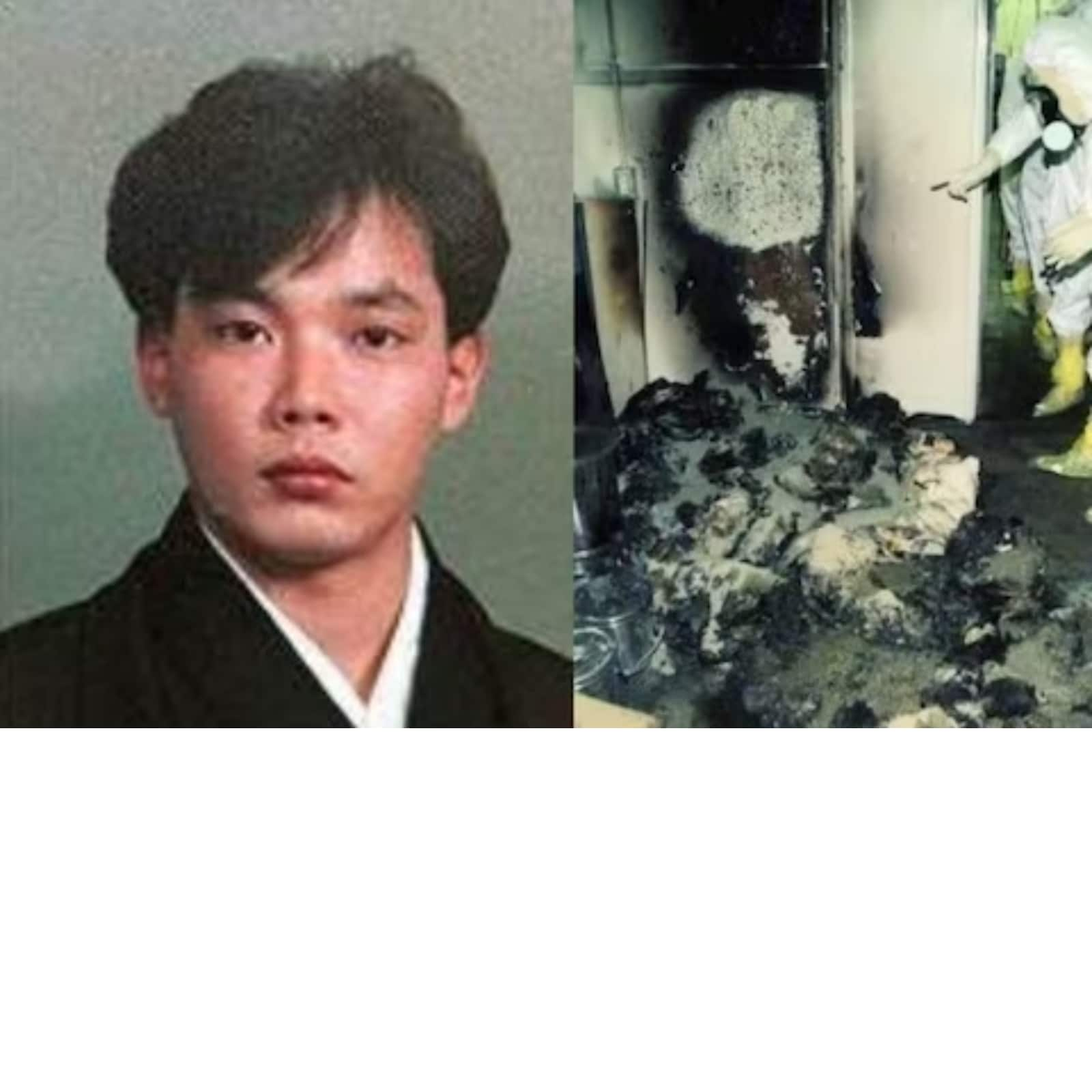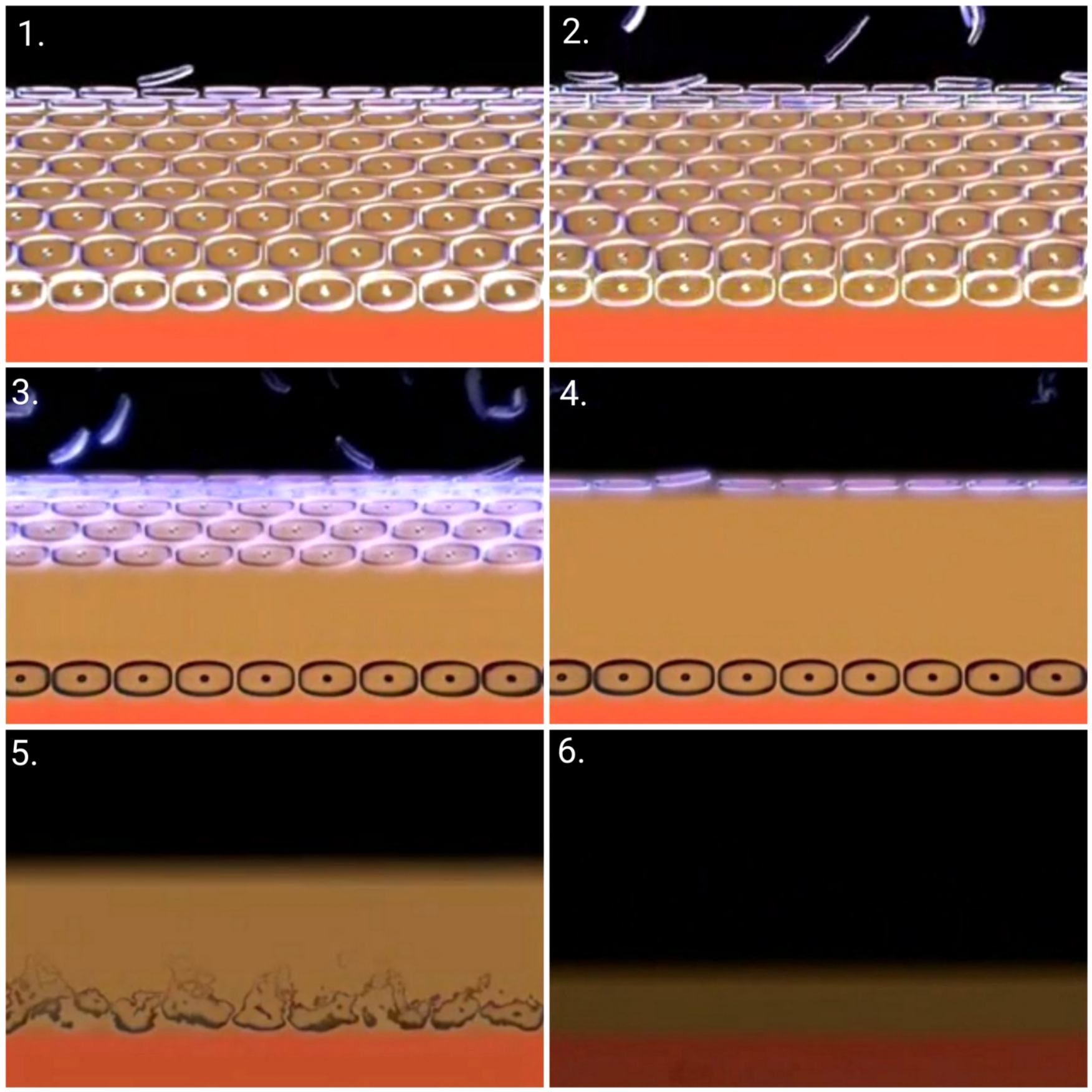Exploring Hisashi Ouchi: The Tragic Story Behind The Photos
Some stories stick with you long after you hear them, and Hisashi Ouchi’s tale is one of those. If you've come across pictures or accounts of nuclear disasters, chances are you've stumbled upon his name. Hisashi Ouchi was a man whose life became a symbol of the dangers of nuclear energy. This isn’t just another story; it’s a reminder of the sacrifices made in the name of progress. So, let’s dive in and explore what really happened behind those haunting photos.
When we talk about nuclear disasters, most people immediately think of Chernobyl or Fukushima. But there’s another lesser-known incident that left an indelible mark on history. It involves a man named Hisashi Ouchi, whose story is both tragic and educational. This isn’t just about the science of radiation; it’s about the human cost.
Now, before we get too deep into the details, let me warn you—this story isn’t easy to read. But it’s important. Understanding what happened to Hisashi Ouchi can help us appreciate the risks involved in working with nuclear power and remind us why safety protocols are so crucial. So, grab a coffee, sit back, and let’s uncover the truth behind the photos.
Who Was Hisashi Ouchi?
Before we dive into the tragedy, it’s essential to know who Hisashi Ouchi was as a person. He wasn’t just a statistic or a name attached to a horrifying story; he was a human being with dreams, fears, and a family. Let’s take a moment to understand his background.
Biography of Hisashi Ouchi
Hisashi Ouchi was born on February 26, 1969, in Tokaimura, Japan. He grew up in a small town where nuclear power wasn’t just an industry—it was a way of life. Ouchi worked at the JCO nuclear fuel processing plant, a facility that played a key role in Japan’s nuclear energy program. He was a dedicated worker, respected by his colleagues and admired for his commitment to his job.
Here’s a quick look at Hisashi Ouchi’s personal details:
| Full Name | Hisashi Ouchi |
|---|---|
| Date of Birth | February 26, 1969 |
| Place of Birth | Tokaimura, Japan |
| Occupation | Nuclear Worker at JCO Plant |
| Family | Married with one child |
Hisashi wasn’t just a worker; he was a father, a husband, and a friend. Knowing this adds a layer of humanity to his story, making it all the more heart-wrenching.
The Tokaimura Criticality Accident
Now, let’s talk about the event that changed everything. On September 30, 1999, a criticality accident occurred at the JCO nuclear fuel processing plant in Tokaimura, Japan. This wasn’t just any accident—it was one of the worst nuclear incidents in history, and Hisashi Ouchi was at the center of it.
What exactly is a criticality accident? Well, it’s when a nuclear chain reaction becomes self-sustaining, releasing massive amounts of radiation. This happens when there’s too much nuclear material in one place, and that’s exactly what happened at the JCO plant. Workers were mixing uranium oxide powder with nitric acid in a stainless-steel precipitation tank, but they accidentally added too much uranium, triggering the reaction.
Hisashi Ouchi, along with two other workers, was exposed to lethal doses of radiation. The photos you might have seen are from this exact moment, capturing the harrowing aftermath of the incident.
What Happened That Day?
- Three workers were mixing uranium oxide powder in a precipitation tank.
- They added too much uranium, causing a criticality accident.
- Hisashi Ouchi was exposed to a massive dose of radiation—about 17 sieverts.
- He suffered severe burns, internal organ damage, and blood loss.
The radiation exposure was so intense that it destroyed his DNA, making recovery nearly impossible. It was a nightmare scenario that no one could have prepared for.
Understanding Radiation Exposure
To truly grasp the severity of Hisashi Ouchi’s condition, we need to understand what radiation exposure means. Radiation is measured in sieverts, and even small doses can be harmful. For context, most people are exposed to about 2-3 millisieverts of radiation per year from natural sources. Hisashi Ouchi, however, received a dose of 17 sieverts—enough to kill anyone within hours.
Here’s a quick breakdown of radiation exposure levels:
- 0.1 sievert: Mild symptoms like nausea and vomiting.
- 1 sievert: Severe radiation sickness, including burns and organ damage.
- 10 sieverts: Lethal dose, almost always fatal.
- 17 sieverts: Beyond comprehension—Hisashi Ouchi’s exposure level.
It’s mind-blowing to think about the sheer amount of radiation he endured. This wasn’t just a case of radiation sickness; it was a fight for survival against impossible odds.
The Medical Battle
After the accident, Hisashi Ouchi was rushed to the University of Tokyo Hospital, where a team of top medical experts worked tirelessly to save his life. The treatment was groundbreaking, involving skin grafts, blood transfusions, and experimental therapies. But despite their best efforts, the damage was too extensive.
Hisashi spent 83 days in the hospital, enduring unimaginable pain and suffering. Doctors described it as one of the most challenging cases they had ever faced. The radiation had destroyed his immune system, leaving him vulnerable to infections. His skin melted off in large chunks, and his internal organs began to shut down one by one.
Key Medical Challenges
- Severe burns covering 60% of his body.
- Massive blood loss and anemia.
- Organ failure due to radiation damage.
- Constant risk of infections.
Throughout his ordeal, Hisashi remained conscious and aware of his condition. He reportedly told his doctors, “I think I’m going to die.” His bravery and resilience in the face of such adversity were truly remarkable.
The Human Cost of Nuclear Energy
Hisashi Ouchi’s story is a stark reminder of the dangers of nuclear energy. While it’s a powerful source of clean energy, it comes with risks that can’t be ignored. The Tokaimura accident highlighted the importance of safety protocols and the need for constant vigilance in nuclear facilities.
According to the World Nuclear Association, there are over 440 nuclear reactors operating worldwide, providing about 10% of the world’s electricity. While accidents like the one in Tokaimura are rare, they underscore the need for better training and stricter regulations.
Lessons Learned
- Improved safety protocols in nuclear plants.
- Enhanced worker training and education.
- Stricter regulations and oversight.
- Advancements in medical treatments for radiation exposure.
Hisashi’s tragedy has led to significant changes in the nuclear industry, ensuring that such accidents are less likely to happen in the future. His legacy lives on in the form of safer working conditions and better emergency response plans.
The Photos: A Legacy of Pain
The images of Hisashi Ouchi’s injuries are some of the most haunting photos ever taken. They show the devastating effects of radiation exposure and serve as a powerful reminder of the dangers of nuclear energy. While these photos are difficult to look at, they are an important part of understanding the full impact of the Tokaimura accident.
Photographer Kenji Ogiwara captured these images during Hisashi’s treatment at the hospital. Ogiwara’s work has been widely published and has helped raise awareness about the risks of nuclear power. The photos aren’t just documentation; they’re a call to action for safer energy solutions.
Why These Photos Matter
- They highlight the human cost of nuclear accidents.
- They serve as a warning for future generations.
- They document the medical response to severe radiation exposure.
While the photos are graphic, they play a crucial role in educating the public about the dangers of nuclear energy. Hisashi Ouchi’s story is a testament to the importance of safety and responsibility in the nuclear industry.
Remembering Hisashi Ouchi
As we reflect on Hisashi Ouchi’s life and legacy, it’s important to remember that he was more than just a statistic. He was a father, a husband, and a friend whose life was tragically cut short. His story serves as a powerful reminder of the sacrifices made in the name of progress.
Hisashi’s bravery in the face of unimaginable suffering is a testament to the human spirit. Even in his darkest moments, he maintained his dignity and courage. His legacy lives on in the changes made to the nuclear industry and the advancements in medical treatments for radiation exposure.
How Can We Honor His Memory?
- Advocate for safer nuclear practices.
- Support research into radiation treatment and prevention.
- Raise awareness about the risks of nuclear energy.
By learning from Hisashi’s story, we can work towards a safer and more responsible future. His memory deserves to be honored, not just as a cautionary tale but as a call to action for change.
Daftar Isi
Here’s a quick guide to help you navigate through the article:
- Who Was Hisashi Ouchi?
- The Tokaimura Criticality Accident
- Understanding Radiation Exposure
- The Medical Battle
- The Human Cost of Nuclear Energy
- The Photos: A Legacy of Pain
- Remembering Hisashi Ouchi
Conclusion
Hisashi Ouchi’s story is one of tragedy, resilience, and ultimately, change. It’s a reminder of the dangers of nuclear energy and the importance of safety in all aspects of our lives. While the photos may be difficult to look at, they serve as a powerful testament to the human cost of such accidents.
As we move forward, let’s honor Hisashi’s memory by advocating for safer practices in the nuclear industry. Let’s support research into radiation treatment and prevention, and let’s raise awareness about the risks involved. His legacy deserves to be remembered, not just as a cautionary tale but as a call to action for a better, safer future.
So, what do you think? Leave a comment below and share your thoughts on this story. And if you found this article informative, don’t forget to share it with others. Together, we can make a difference.

Exploring The Tragic Story Behind Hisashi Ouchi Pictures A Detailed Look

Understanding The Tragic Story Behind Hisashi Ouchi Photos

Unveiling The Tragic Story Behind The Hisashi Ouchi Image